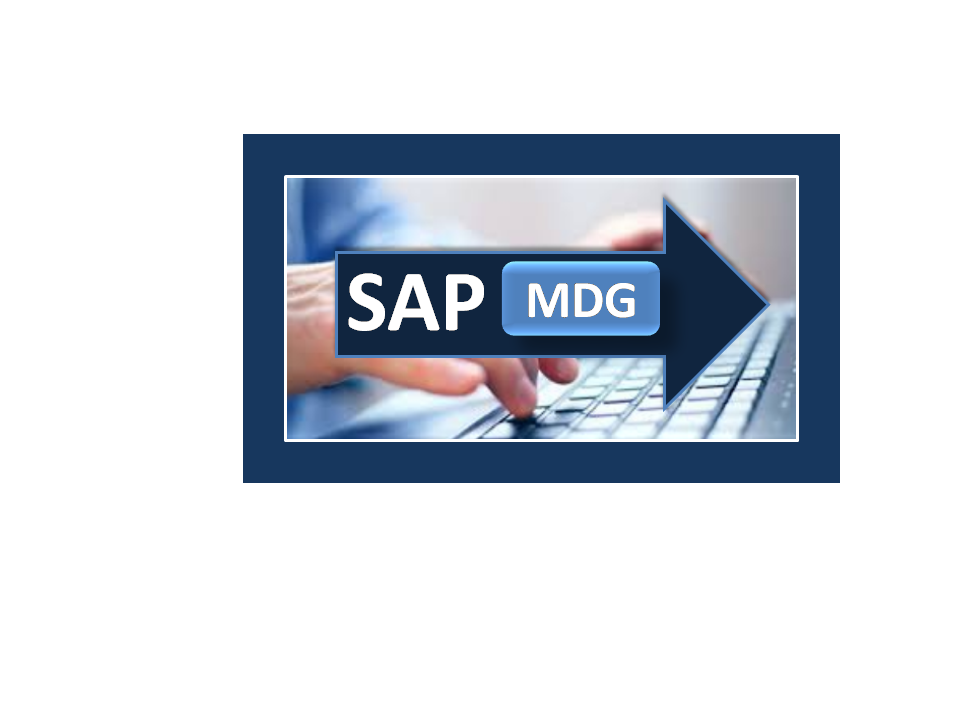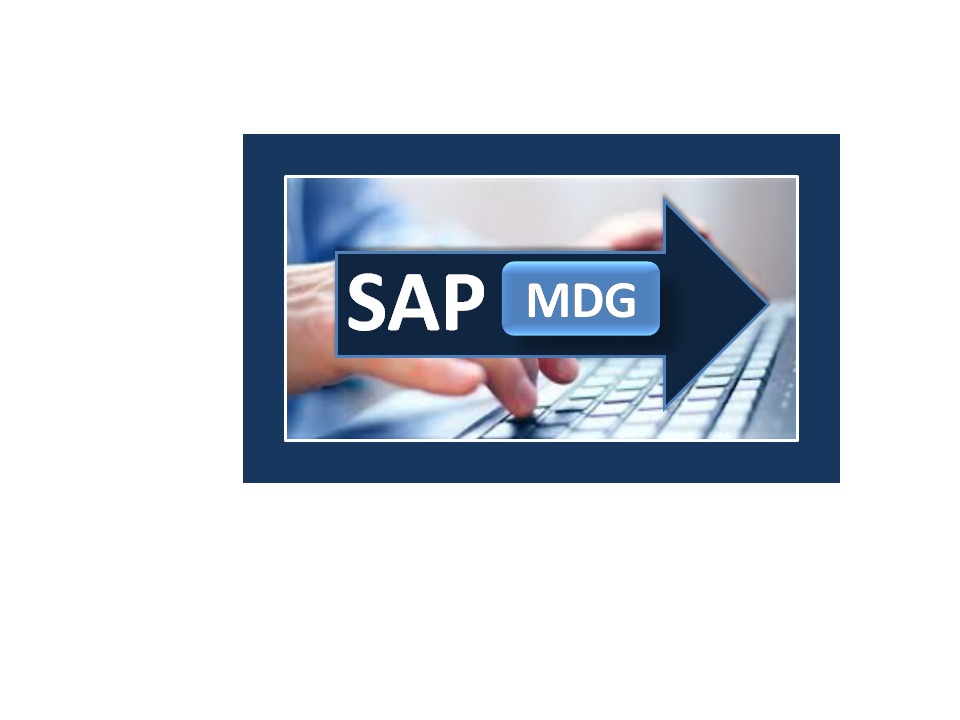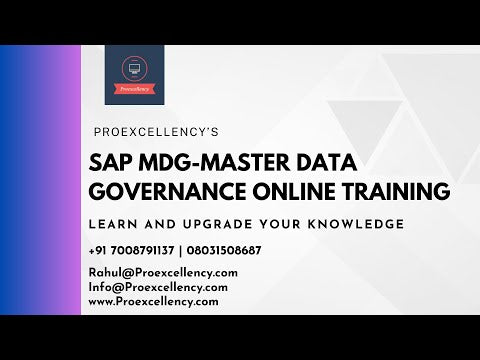proexcellency
SAP MDG ONLINE TRAINING
Proexcellency Provides SAP (MDG) Master Data Governance Training Course and teaches you how MDG is a market-leading solution that allows you to define, monitor, enforce, and improve master data across domains for central or decentralized master data management in hybrid landscapes. The SAP Master Data Governance application enables you to pull together master data and control it centrally utilizing the master data management layer based on SAP Business Technology Platform. an integrated, trusted view of your business enables you to work more efficiently and make better decisions. SAP MDG makes sure data is integrated across both SAP and non-SAP systems and is a combined foundation for optimized business processes leading to a rise in productivity with trusted data, guarantees consistency and saves time and money. SAP Master Data Governance training program gives you a better understanding of the key topics covered. Our experts providing SAP MDG training are experienced and well versed in all the aspects of this field.
Key Capabilities:
- Consolidation: Generate a single source of truth by integrating SAP and third-party data sources and mass processing additional bulk updates on large sizes of data.
- Central governance: Provide various teams to own unique master data attributes and enforce validated values for specific data points through collaborative workflow routing and alerts.
- Data quality and process analytics: Define, validate, and monitor established business rules to confirm master data readiness and analyze master data management. SAP Master Data Governance training provides knowledge about the Prebuilt data models, business rules, workflows, and user interfaces which can be extended and customized according to business needs. SAP ABAP Floor Plan Manager, BRFplus, SAP workflows, Idoc,Web Dynpro, and ALE are the main technologies (technology components) Which is used to achieve smooth master data creation, updation, deletion experience in SAP MDG for multiple domains and systems.
SAP MDG Benefits:
- You get a single trusted view of your data. Automated consent workflows for master data designing or change requests. Central formation and maintenance of master data beyond SAP and non-SAP systems. Imposing compliance to corporate data standards.
- Formation of an audit trail for master data substitute. Development of data quality.
- Minimized costs.
Advantages of SAP Master Data Management Course
Master data governance is a discipline that is implemented beyond organizations via a progressing and evolving program consisting of technologies, subject matter experts and a focused project to impose Master Data Governance. An MDG program is the implementation of the technology and this can be learned through MDG training online. The challenges will not be technical but related to data governance. The formation of an appropriate, well-functioning data governance mechanism is necessary for the success of an MDG program. It requires to make sure of strong alignment with the organization's business vision and demonstrate occurring value through a set of metrics. SAP Master Data Governance online Certification training boosts your income potential, getting trained in SAP MDG improves your knowledge to be an effective Professional.
Reach out to us for more information on SAP Master Data Governance online Certification training & SAP MDG certification cost.
|
Overview |
Describe the purpose of SAP MDG Architecture Overview Deployment options Flex Vs Re-use Business Processes Finance Supplier Material Customer Business Partner |
||||||
|
Data Modeling |
1. Entity Types 2. Relationships 3. Access Class 4. Flex and Reuse model 5. Basic Technical Settings 6. SMT Mappings 7. Extend Mapping 8. Extending data Model 9. Enhance Standard Data Models – MM, BP, Z0 etc 10. Create Custom model |
||||||
|
UI Modeling |
1. Create and Edit UI Configurations for Custom Object model 2. Standard Adaptable OVP configuration for standard data model BP(Bol Genil Approach) 3. Standard Adaptable OVP configuration for standard data model MM(PLM Approach) |
||||||
|
Data Quality and Search |
1. Validations and Derivations rules (BRFplus) 2. Various BADI’s used for validations, derivations and enterprise search |
||||||
|
Process Modeling |
1. Business Activities configurations 2. Change Request and change request type configurations |
||||||
|
Workflow |
1. Basic workflow settings(common) 2. Rule based workflow 3. Extension of BRF+ workflow functionality and ABAP standard workflow extension 4. Other MDG workflow |
||||||
|
Data Replication |
1. Technical Settings for data replication 2. Creation of Business Object and relating it with data model 3. Replication Model 4. Outbound Implementation and related settings |
||||||
|
Understanding MDG API |
1. Governance API 2. Convenience API 3. Change Request API |
||||||
|
Data Import Framework |
1. How to Create Mass Customer/Vendor/Material in MDG 2. File Upload/File Download |
||||||
|
MDG Consolidation |
1. Consolidation on BP |
||||||
|
2. Consolidation on MM |
|||||||
Duration
Duration
30-35 hrs
Shipping & Returns
Shipping & Returns
Dimensions
Dimensions
Care Instructions
Care Instructions



